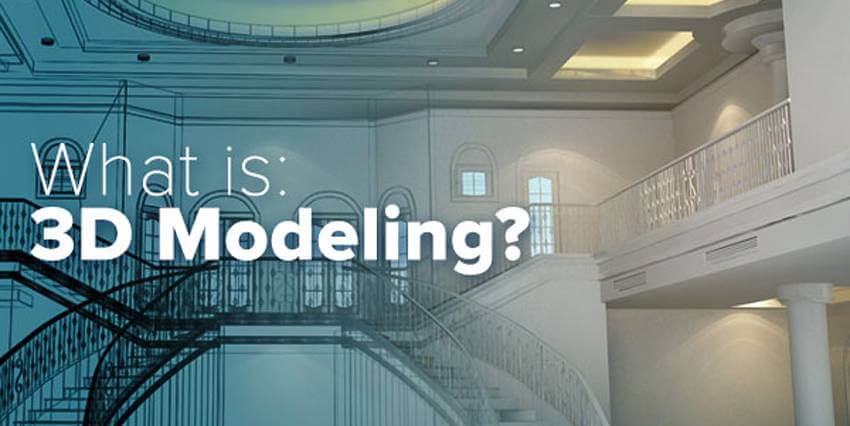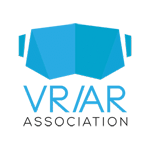
3D modeling has been around since the 1970s. From those primitive beginnings, we have arrived at a point where state-of-the-art 3D models look, move, and feel increasingly similar to real objects. Current-generation 3D imagery is authentic enough to suspend disbelief. After years of attempting to create a realistic-looking image of a product or person, today’s developers can generate simulations of the real world that are virtually indistinguishable from their physical counterparts. Thanks to the always-increasing power of computer processors, these models can be rendered in real-time for Augmented Reality, Virtual Reality, and WebGL experiences.
I talked to Shawn Rothery, Executive Director for 3D Cloud about the state of 3D models — what they are, how we create them, and implementations that blur the line between real and digital. Here’s our conversation:
Question: What is 3D Modeling? Do I need special glasses to see it?
Shawn Rothery: 3D Modeling is a combination of sculpting and painting where a 3D artist uses digital tools and palettes to create shapes and colors ranging from the subatomic to the celestial. Creating 3D models requires traditional art techniques, such as additive or subtractive sculpting, and so an artist must be skilled not only in the digital tools of the trade but also talented in the creation of something from nothing. If you’ve played a video game or watched a movie in the last 30 years or so, you’re familiar with 3D modeling. The fish in Finding Dory? 3D models. Optimus Prime in Transformers? A very complex 3D model. Azeroth (the world of World of Warcraft)? A huge collection of 3D models.
Special glasses are not required to view 3D models; you see them on your phone, computer, and in television and movies every day. But like those Roy Orbison glasses you wore to see Avatar in 3D, Head-Mounted Displays (HMDs) fool your brain into believing those models exist in 3D space instead of the two-dimensional screens where they actually reside.
I’m going to throw out some terms related to 3D Modeling. You tell me how they relate to the topic. Ready?
Sure. Go ahead.
Ok, first one: Geometry?
This is the “shape” of a 3D model and the aspect where the artist must sculpt to form some sort of object. At 3D Cloud this is everything from a pad of sticky notes to a mountain range and beyond. We use tools like 3ds Max, Maya, and Zbrush to create geometry. It’s called geometry because at its lowest level, a 3D model is a collection of points, lines and planes. In 3D art, these are called vertices, edges, and polygons (or faces). Imagine a potter sitting at a wheel who then proceeds to add clay to the wheel and spin it into a pot. The only significant difference between that potter and our artists is the mess to clean up afterward.
Textures?
Creating textures is how an artist adds color (and other) information to geometry and is best visualized as painting layers on the models. Let’s go back to that earthen pot analogy. A layer of paint would be added to it, giving it color. A glaze would likely be applied, giving it a certain sheen. And here is where 3D modeling diverges a bit. We must create another layer that adds the uneven feel of the object … its roughness or smoothness. For when we create geometry, it’s completely smooth. Absolutely smooth, actually. Then we may add another layer to enhance the illusion of how light falls on the pot and creates shadows. And beyond the earthen pot example, we could even add another layer that would detail where the model emits light (light bulbs, LEDs, stars, etc).
Rigging?
When a 3D model is to be animated in some way, it needs to be “rigged.” This is most easily explained by visualizing a walking person. In order for the model to move like an actual person, we have to create information so the computer knows where a leg is supposed to bend or how a head rotates. Effectively, we build the skeleton of the person. This same concept translates to machinery or robotics where we have to encode how a wheel spins or a pump operates.
Optimization?
A highly detailed 3D model might contain millions of polygons and very detailed (large) textures. It could be created in such a way as to be completely indistinguishable from a physical, real-world object. Think about AAA, blockbuster movies. However, these models are so detailed that it takes big rooms full of very large computers to process all of that geometry and textures. That doesn’t happen in real time! Using the movie Avatar as an example, it takes nearly 50 hours of processing to create one frame (1/24th of a second) of movie. And when you consider every frame has to be created twice for the 3D-glasses version, that’s a significant amount of time. Our models must perform flawlessly in real time on mobile devices. In order to do that, we have to keep the overall number of points, lines, and polygons low and be economical in our creation of textures, both in number of “layers” required and how we compress the data.
What’s so difficult about designing 3D models?
3D modeling requires an artist to have not only the talent of a traditional sculptor and painter, but also the skill to wrangle complex software under the tight constraints of mobile applications and current-state AR/VR. At 3D Cloud, these constraints require our artists to understand the processing limitations of a clients’ target platform and find the right balance of detail and optimization that results in realistic product visualization that performs within the intended environment. There are a number of automated tools and techniques out there to help artists reduce the overall complexity of their models, but these are tailored to the video game industry and invariably result in loss of resolution which leads to models that look fake. This is fine when it’s an object in a game that the player is going to run past once and only see it in the distance or in their periphery. It’s not acceptable when a consumer is trying to determine if a lighting fixture goes with their existing decor or if the custom cabinets they’ve just designed fit as intended. Close enough isn’t good enough for the work we do.
If it’s so hard, how do we pull it off? What makes 3D Cloud special?
Experience. We’ve been doing this longer than anyone. Our standards for 3D modeling of products and environments are tailored for realism in limited processing environments such as iOS and current-state VR. Our dedication to realism extends to significant investment in technologies normally reserved for high-tolerance manufacturing such as laser scanning and cutting-edge image capture technology to create accurate surfaces and materials. Anyone could sit down to morning coffee, watch a few YouTube videos, download some free software and model a passable sofa before the second cup. But to model the actual sofa upon which they are perched while drinking that coffee and have it be indistinguishable to the average person while viewing on an iPad … that takes talent, skill, experience and the right tools.
What’s an example of something amazing we’re doing in the lab right now?
Cool stuff. Very cool stuff. Trust me. No one else is doing what we’re doing. We know more about 3D modeling than the generals do, so to speak. We’re doing some amazing things with laser scanning, image capture, and CAD conversion that’s pretty exciting. Most organizations use photogrammetry, “360 degree” photography, or other tricks to mimic 3D modeling, but all these techniques fail when trying to reach the goal of realism. It really is all about the light and without creating the right geometry and texture information, you just don’t get that.
What’s the most exciting project you and the team have worked on?
Every day has its own level of excitement, but we are always most excited when diving into something new. Recently, we’ve added creating realistic environments to our portfolio. These range from a simple bathroom to a New England shoreline. Landscapes are especially challenging since we still have to mindful of the overall content load within a scene. Nothing breaks realism and immersion like blocky mountains or a choppy experience.











